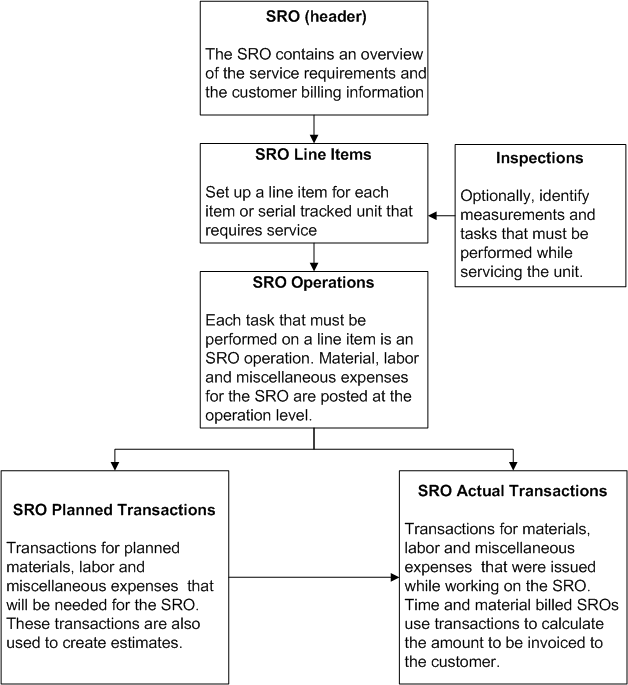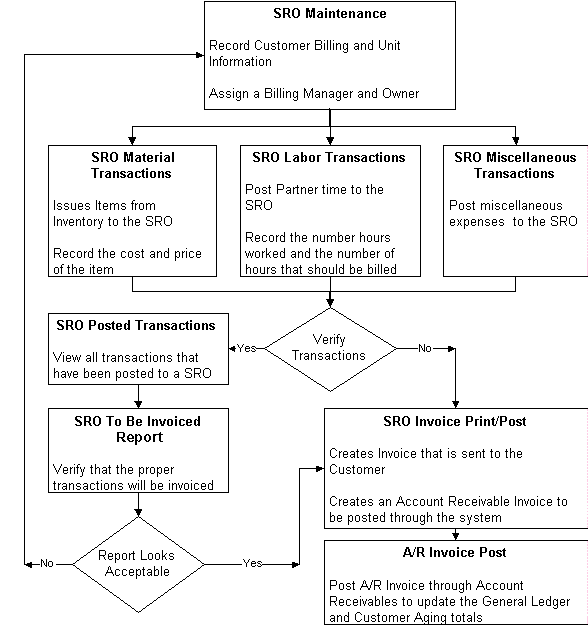Using SROs to Track Service Requests, Transactions, and Billing
When service work requires materials, labor, or other miscellaneous expenses, a
Service Request Order (SRO) must be created. The service order is used to track the
expenses and to invoice the customer for any non-warranty related items. The service order
contains lines and operations that allow for many different types of service calls. For
example, a service order for a large item might have only one line item with multiple
operations. Service orders on smaller items might have multiple line items with only a few
operations.
The structure of a SRO contains these elements:

Process Flow
This diagram shows a typical flow that could be used to add a service order and then track it as service is performed and then billed to the customer.

Related topics